Like many other types of wasps, thynnid wasps visit flowers as adults to glean nourishment from nectar for their prey-hunting activities. However, thynnid wasps are parasitic, which means that they don’t build or provision a nest with prey like a social or predatory wasp. Instead, they lay their eggs directly on their prey so that their offspring (larvae) have a live food source while they develop and eventually pupate.
These wasps are beneficial in two ways: Their flower-visiting activities make them potential pollinators, and they hunt white grubs (scarab beetle larvae) underground, which minimizes damage caused by the root-feeding beetle larvae and foliage-feeding adults. These large wasps may look intimidating — the males even have a menacing pseudo-stinger — but they aren’t aggressive whatsoever. Without a nest to defend, they have no reason to threaten humans, so you can comfortably welcome them into your garden by providing their favorite flowers.
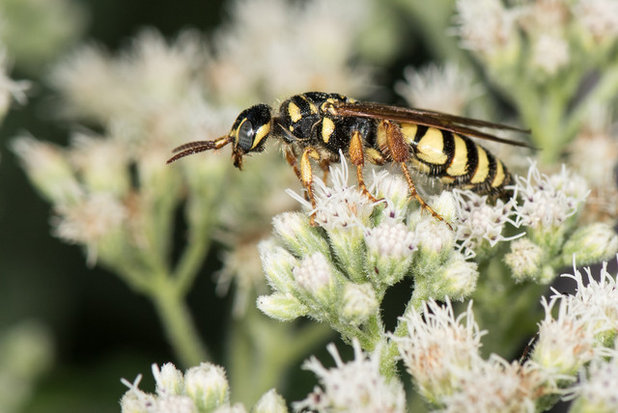
Holm Design & Consulting LLC
Family: Thynnidae (thynnid wasps), formerly Tiphiidae (tiphiid wasps)
Genus: MyzinumCommon name: Thynnid wasp
Distribution: Central, southwestern and northeastern North America, including southern Ontario and Quebec in Canada, and southward to Central America
Habitat: Gardens, meadows, prairies, old fields and farms where prey and forage occur
When to look for them: In the northern United States, mid-to-late July is often when the first sightings of adult wasps occur (as early as June farther south). Both males and females can be observed visiting flowers in late July through early September.
Shown: A female thynnid wasp visits boneset (
Eupatorium perfoliatum).
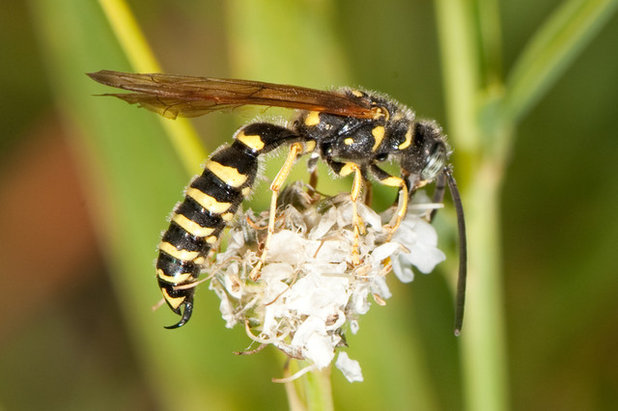
Holm Design & Consulting LLC
How They HelpThese wasps parasitize scarab beetle larvae (family Scarabaeidae), seeking out the larvae of May beetles in particular. May beetle adults are herbivores and feed on plant foliage; their larvae feed on plant roots. Thynnid wasps help keep these subterranean white grub populations in control. Adult thynnid wasps also are common flower visitors and are considered pollinators in some instances.
Shown: A male thynnid wasp visits white prairie clover (
Dalea candida). The male has a long, slender abdomen that terminates in a curved pseudo-stinger.
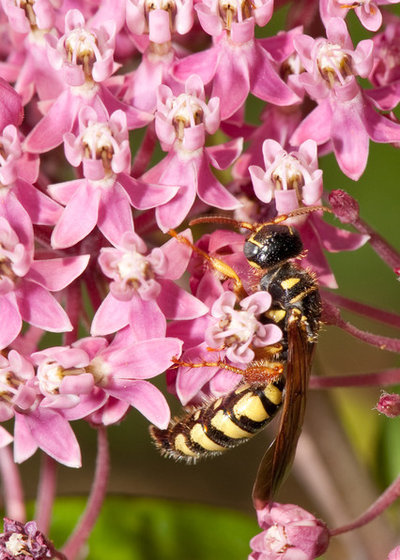
Holm Design & Consulting LLC
How to Spot ThemAdults. Males and females differ in size. Males have a long, slender abdomen that terminates in a curved pseudo-stinger (not an actual stinger), slender legs and longer antennae than females. Females have a large abdomen and broad legs that are covered in coarse hairs. Both males and females have a black head, thorax and abdomen with white, cream or yellow markings.
Babies. Larvae develop underground on the parasitized prey, so you’re unlikely to observe them in your garden.
Shown: A female thynnid wasp forages for nectar on swamp milkweed (
Asclepias incarnata).
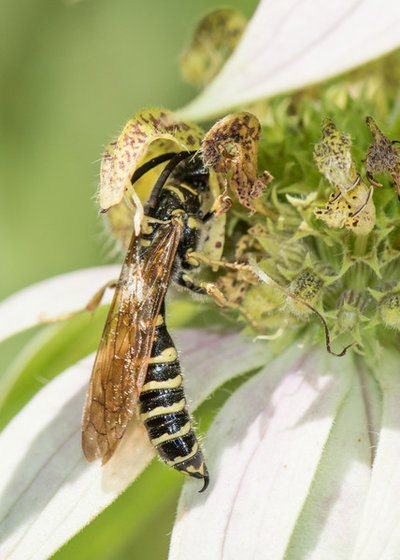
Holm Design & Consulting LLC
How to Lure ThemWith prey. Adult thynnid wasps need available prey to parasitize. If you have a large population of May beetle or other scarab beetle larvae in your lawn or landscape, refrain from using pesticides that can impact beneficial insects like thynnid wasps.
Shown: A male thynnid wasp forages for nectar on spotted beebalm (
Monarda punctata).
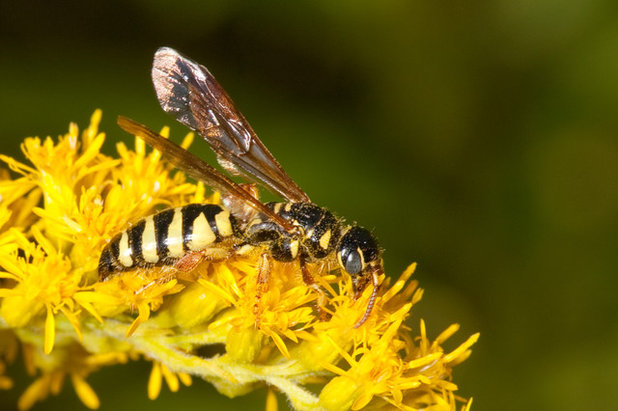
Holm Design & Consulting LLC
With forage plants. Since thynnid wasps don’t construct nests, they have fewer requirements than predatory wasps have.
Adults emerge in July and need nourishment from flowers to fulfill their life cycle tasks of mating, and searching for and parasitizing prey. Plants that adults have been recorded visiting include:
- Summer: Boneset (Eupatorium perfoliatum), Virginia mountain mint (Pycnanthemum virginianum), rattlesnake master (Eryngium yuccifolium), spotted beebalm (Monarda punctata), swamp milkweed (Asclepias incarnata) and white prairie clover (Dalea candida)
- Late summer and fall: Goldenrod (Solidago spp.)
Shown: A female thynnid wasp forages on goldenrod in early fall.
Browse native plants for your region
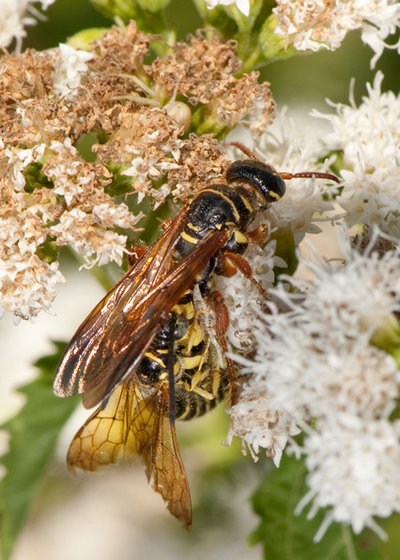
Holm Design & Consulting LLC
Life cycle. Thynnid wasps are parasitic. Instead of constructing and provisioning a nest with prey as a predatory wasp would, parasitic wasps lay their eggs directly on, or in, their prey. Thynnid wasps parasitize beetle larvae underground, usually scarab beetle larvae (family Scarabaeidae), including May beetles. They also have been recorded parasitizing tiger beetle larvae (subfamily Cicindelinae).
The female thynnid wasps locate their prey underground (probably by some olfactory cue) and, using a tunnel created by them or the adult beetle, descend to lay an egg on their prey.
The egg hatches, and the wasp larva burrows into its host and begins to consume its nonessential tissue first, followed by essential tissue, which eventually kills the host. Once the host dies, the wasp pupates and overwinters underground. The following summer, the wasp emerges as an adult completing the one-year life cycle from egg to larva, pupa and adult.
As with any predator-prey relationship, the occurrence of these wasps can vary from year to year as the population of their prey fluctuates on a multiyear time frame.
Shown: A male and female thynnid wasp mate while foraging on boneset (
Eupatorium perfoliatum).
Region by region: What to do in your garden this month





